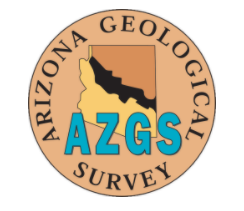Damage to structures in Arizona is commonly related to soil characteristics – shrink/swell soils and collapsing soils. Shrink/swell soils cause more damage to homes than do floods, tornadoes, and hurricanes combined.
Arizona’s Expansive and Collapsing Soils – A State-wide Geologic Hazard
SOIL (n) : The unconsolidated mineral or organic material on the immediate surface of the earth that serves as a natural medium for the growth of land plants. (Source: Soil Science Glossary) USE THIS QUOTE in banner images.
Arizona’s state soil – each state has a type soil – is the Casa Grande soil from near the city of the same name. It was first identified in 1936. The Casa Grande series, which comprises well-drained, saline-sodic soils on fan terraces and basin floors, covers at least 275,000 acres, and more likely several million acres in central and southwestern Arizona.
Arizona hosts a great diversity in soil types forming an intricate patchwork throughout the state. For details on Arizona’s major soil types (listed below) and characteristic features of slope, elevation, climate, distribution, and land uses, see Description of the Mapping Units of the Arizona General Soil Map (Hendricks, D. M., 1985, Arizona Soils, University of Arizona, Tucson, AZ.)
Major soil types of Arizona
- HA Hyperthermic Arid with 10 subtypes
- TA Thermic Arid with 5 subtypes
- TS Thermic Semiarid with 19 subtypes
- MA Mesic Arid with 6 subtypes
- MS Mesic Semiarid with 10 subtypes
- MH Mesic Subhumid with 6 subtypes
- FH Frigid Subhumid with 8 subtypes
Natural Resources Conservation Service hosts a powerful, online Web Soil Survey tool to access and use soil data for all 50 states. For a user guide: https://www.nrcs.usda.gov/Internet/FSE_DOCUMENTS/nrcs144p2_064631.pdf
Impacts on People, Property, and Infrastructure
According to the American Society of Civil Engineers about half of the homes in the United States are built on expansive soils. (Soils prone to large volume changes, i.e., shrinking and swelling, resulting from changes in water content.) And of these homes, nearly half suffer some damage because of the soil. Each year in the U.S., expansive soils are responsible for more damage to homes than are floods, tornadoes, and hurricanes combined!
The geology and semi-arid climate of the arid Southwest provide near ideal conditions for the formation of expansive and collapsing soils. And, unfortunately, problem soils are found throughout Arizona, from Yuma in the southwest to the northeast corner of the Colorado Plateau.
Expansive and Collapsing Soils. Expansive soils contain clays – microscopic-sized minerals – that are capable of large volume changes in the face of changing water conditions. Add a little water – say during a monsoon storm — to expansive smectite clay and it swells to many times its original volume. Remove that water during the hot, dry summer and the clay component of the soil shrinks. The resulting changes in soil volume can cause considerable damages to homes, sidewalks, pipelines, and streets.
Collapsing Soils comprise loose, dry, low-density material – i.e., undercompacted – that shrink when wetted (hydrocompaction), and/or when loaded with a great weight, such as a building or pavement. These types of soils are particularly common in the semi-arid southwestern U.S. where wind and ephemeral streams deposit loose, unconsolidated, and undersaturated (re.: dry) sediments that are prone to sudden collapse.
The Natural Resources Conservation Service provides soil shrink/swell potential maps for Phoenix and Tucson, Arizona.
Recognizing Expansive Soils. Expansive soils display characteristic visual and mechanical behavior. Some common visual and tactile indicators include:
- Desiccation cracks (mud cracks)
- Popcorn soil texture
- Soil that is sticky when wet
- Cracked foundations and warped roads
The surest check for expansive soils is to employ a reputable geotechnical firm to: 1) take soil borings, and 2) test the expansiveness of the soil.
Some common impacts of problem soils, include:
- Foundation cracks
- Heaving and cracking of floor slabs and walls
- Jammed doors and windows
- Ruptured pipelines
- Heaving and cracking of sidewalks and roads.
Geoscience at work for Arizona
Remediating expansive soils after building your home can be an expensive and daunting task. But there are some things that you can do, and chief among them is to reduce watering around your home’s foundation. The destructive cycle of expansive soils is driven by alternate wetting and drying. To break the cycle, avoid placing plants next to your foundation, thereby minimizing the volume of water introduced next to your home.
For a quick rundown on your options see “So your home is built on expansive soils,” by W.K. Wray and published in 1995 by the American Society of Civil Engineers. The Colorado Geological Survey has an excellent, illustrated, 76-page booklet ‘SP-43 “A guide to Swelling Soils for Colorado Homebuyers and Homeowners.” While not available as a free download, you can purchase it online from the CGS for $7.00.




